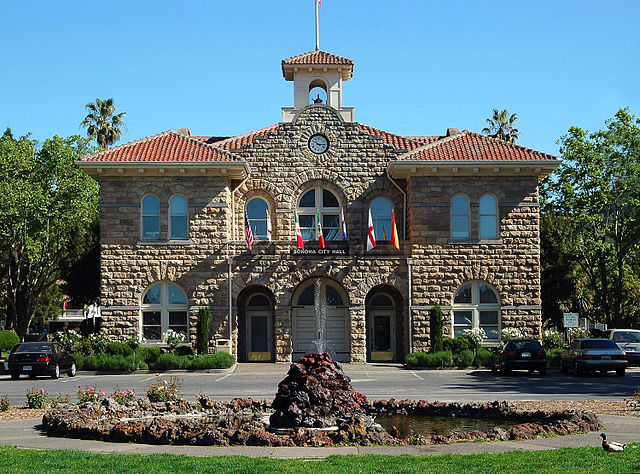I attended the March 16 meeting of the Sonoma City Council where I heard presentations from the County’s Climate Protection Program, Climate Action 2020, and from the Sonoma County Water Agency and an award to a local surveyor. The surveyor reported that Sonoma Valley has experienced significant land subsidence caused by excessive ground water use. Immediately following, the Water Agency rep. reported a planned 5.4 percent raise in rates. He said because residents of Sonoma Valley had exceeded the water conservation goal by 20 percent, the Agency had “sold” less water, and it was necessary to raise rates to cover lost revenues. Under their regular formula, rates would rise 13 percent to cover lost revenues.
He also reported that the Agency expected “reasonable deliveries” of water despite the drought. Sonoma’s Climate Action Program was described, including a greenhouse gas (GHG) inventory, the goal of developing strategies to meet GHG reduction goals, including a goal set in 2002 to reduce the County’s GHG emissions to 25 percent below 1990 levels by 2015. The GHG inventory is expressed in percent of contributions from different sectors of activity in the County; the major contributors being on-road transportation 52 percent, building energy 33 percent, and agriculture 8 percent (mostly methane from dairy cows).
I was struck by the lack of any probing questions from the Council regarding basic issues of sustainability. Why is the Water Agency expecting reasonable deliveries? What are current reservoir levels, projected levels based on predicted ongoing drought. How should this effect growth, new commercial project approval? Why is there excessive groundwater use if they are receiving reasonable deliveries?
On climate, there were two questions, 1) How are transportation emissions calculated? Answer, dept. of transportation models , 2) Is it getting better? Answer a hesitant, unconvincing yes.
I have been following the climate action program. In fact, their GHG inventory is grossly understated, especially in the agriculture sector, where destruction of thousands of trees for vineyard development — lost carbon sequestration and release of stored carbon — is not counted; the emissions from global distribution of wine produced and/or bottled in the County — also not counted. Even based on this understated count, according to their own statements County emissions have increased. This program has received much praise locally and nationally while, after many hours of research, I’m convinced that, in its present form, it is an effort at creating the illusion of GHG reduction without the need for substantial change in the scale and categories of economic growth.
In addition to understating emissions, it is based on stabilizing parts per million of carbon dioxide in the atmosphere at 450 ppm while the most respected climate scientists agree we need to reduce current 400 ppm to 350 by 2050 to avoid irrevocable, catastrophic warming. Clearly the Sonoma Council has only the most superficial interest.
Jerry Bernhaut
Santa Rosa


Thank you Jerry.